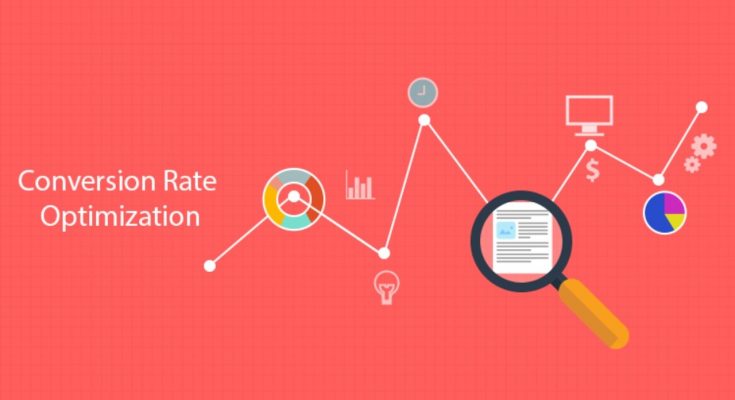Your business’s website is the first chance you get to make a long-term impression on your clients. Attractive & informative websites don’t always translate to higher sales and a larger customer portfolio. Tracking your website’s conversion rate is the simplest method of understanding your visitors and assessing the effectiveness of your campaign.
What are conversion rates?
Conversion rate is the number of visitors on your website that complete a desired action. For example, if your services page has hundred visitors within the hour, but only twenty moves on to the next stage, your conversion rate is 20%.
Conversion rate optimization allows you to increase the percentage of people who complete the desired action. Desired actions generally include buying a service, subscribing or following the social media channel, or filling out a form. Analyzing and optimizing conversion rates allows you to determine what persuades and discourages your users. This data can then be used to improve the user experience of your website.
How to track conversions?
The foremost thing to do before tracking your conversions is to understand what your desired goal is. Would you like your viewers to subscribe to your blog after visiting the page? Or would you like your viewers to buy the product after reviewing the information on the page? Defining a clear business goal will help you determine which metric you need to track.
The general formula for conversion rate is: (goals achieved / total number of visitors) x 100.
The average conversion rate for any business is between 2-4%. Conversion rate optimization and tracking can be done using various tools. This includes Google Analytics, Google AdWords, Google Page speed, Hotjar, and many more. The tool you use to track your conversion rate depends entirely on the metric you want to track.
Why should you track conversion?
Tracking your conversions over an extended period helps you identify what is and isn’t working in your digital marketing campaign. Here are four reasons why tracking conversion rates should be a top priority for your business:
1. Helps you track your ROI:
Regardless of your business size, your ROI is the focus of your digital marketing campaign. Tracking conversion rates allows you to determine how much money you’re spending before you earn a client.
2. Improving your digital campaign:
No business has a 100% conversion rate. However, if you track your conversion rate accurately, you can determine the success of your campaign. You can complete A/B testing to devise a more accurate strategy that will yield higher conversion rates.
3. Helps identify reusable content:
If you’ve run several different marketing campaigns over the past year, you can track the success of each campaign using conversion rates. Comparing the conversion rate of each campaign will help you identify elements that can be reused in future ads or modified in existing ones.
4. Improving user experience:
Most marketers use the marketing funnel to determine what is and isn’t working. Similarly, if you use conversion rates to evaluate the user’s journey on your website, you can determine which step you are losing most of your users. This can then be used to make your website more user-friendly.
If your website or e-commerce has an excellent user experience and you’re still losing user experience, it is a clear indication that your content may not be of good quality. The content you publish on your website makes a significant difference. Eye-catching, data-driven copies are a simple method to improve your conversion rates.
How is content copy important for conversions?
Simple ideas can turn into high-converting copies if they’re presented in a clear, actionable method. Conversion copy is focused entirely on pushing the sale. However, the key to using a content copy for conversions is knowing where to add it. If added on every page, conversion copies can seem pushy and sale-focused.
Content copies can urge your viewer to take any action in a language they speak instead of using jargon. You may have the right content and an attractive user interface but without a good content copy, your user may not get the final push they need to make the final click.
Conclusion
Conversion rates depend heavily on the content you publish, your user interface, and your digital marketing techniques. If analyzed correctly, conversion rates can help you increase traffic on your website and help you reach your goals. Optimizing your website regularly is the best way to ensure your conversion rates are boosted as your business grows.




